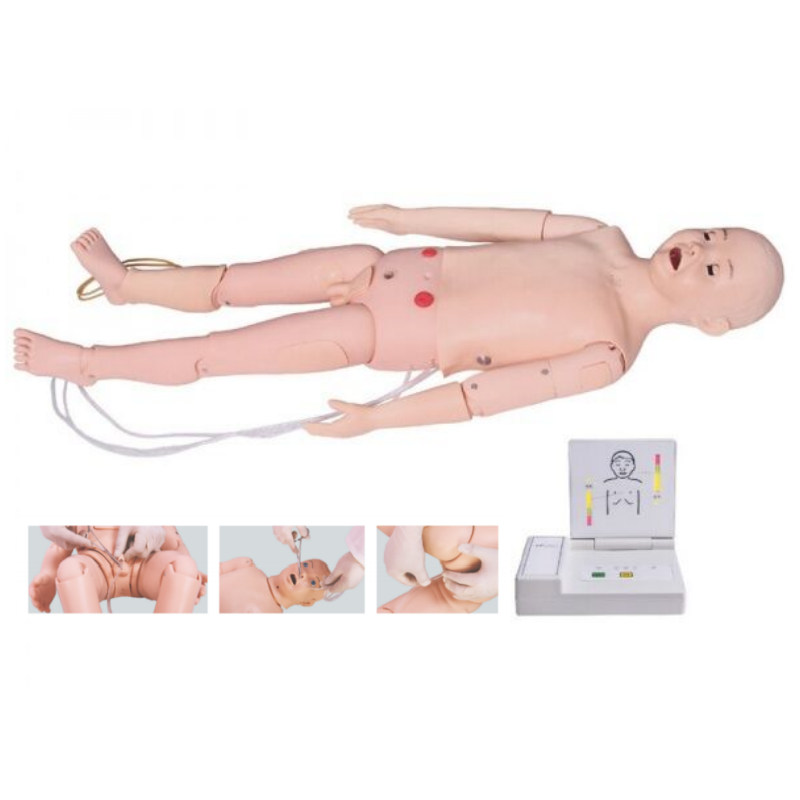Homepageпјҡ NEWS >> Full-featured advanced simulator for five-year-old children - a powerful assistant in actual use scenarios
In a busy medical environment, the fully functional five-year-old advanced simulator has become a powerful assistant for medical staff in actual use scenarios with its excellent simulation effect and practicality.

In the emergency room, a five-year-old child was rushed in with a sudden high fever. The medical staff quickly placed the fully functional five-year-old advanced simulator next to the hospital bed and began to perform a series of emergency treatments on it. The physiological reactions of the simulator are the same as those of real children. The body temperature rises and the breathing becomes rapid. Medical staff need to quickly judge the condition and take corresponding treatment measures. They obtain information about the simulator's condition through auscultation, measuring body temperature, and observing skin changes, and formulate treatment plans based on this information. The realistic responses of the simulator make the medical staff feel like they are in a real emergency environment, improving their emergency handling capabilities and practical operation level.
In the pediatric ward, the fully functional five-year-old advanced simulator also plays an important role. Medical staff use the simulator to practice daily nursing operations, such as injecting drugs, changing diapers, feeding, etc. The simulator can simulate various reactions of children during the care process, such as crying, resistance, etc., allowing medical staff to become more familiar with and master the skills and precautions for child care. Through repeated practice, medical staff can become more proficient in actual operations and provide children with a more comfortable and safer nursing experience.
In addition, in the teaching practice of medical schools, the fully functional five-year-old child advanced simulator has also been widely used. In the simulated pediatric ward, students work in groups for practical operations, and the simulator becomes an important tool for their learning and practice. Through training with simulated humans, students can better master the basic knowledge and skills of children's medical care and improve their practical abilities and professional qualities.
In actual use scenarios, the fully functional five-year-old advanced simulator not only provides medical staff with a realistic training environment, but also helps them accumulate rich practical experience. Through simulator training, medical staff can face various complex clinical situations more confidently and provide more professional and efficient medical services to pediatric patients.
In short, the fully functional five-year-old advanced simulator plays an important role in actual use scenarios and has become an important tool for medical staff to improve their skills and cope with challenges. We believe that with its help, medical staffвҖҷs childrenвҖҷs medical skills will be further improved and they will contribute more to the healthy growth of children.